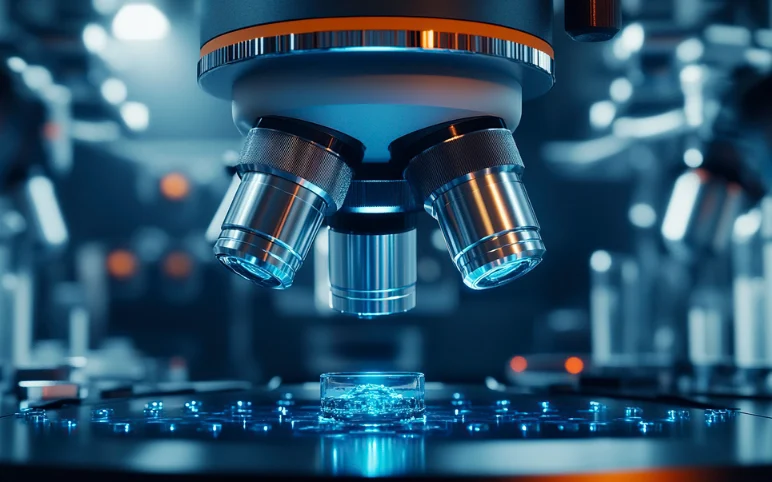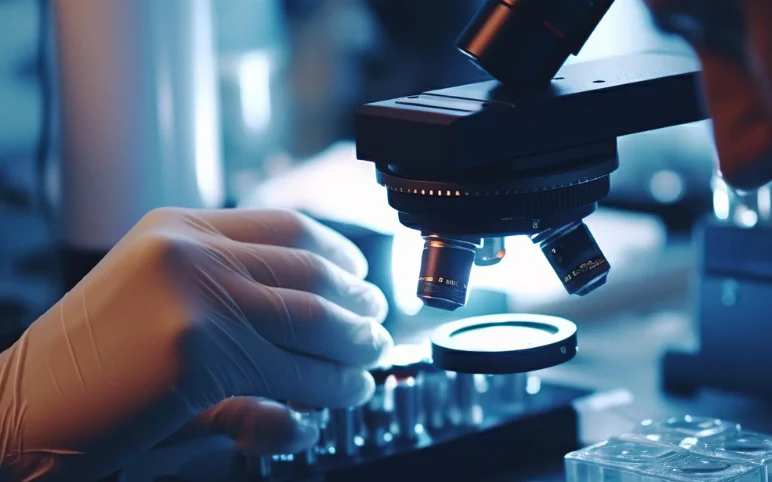Ears to the Future: Evaluating Key Advancements and Trends Driving the Audiology Devices Market Growth
Jan 10, 2024
Table of Contents
Audiology Devices have witnessed an unprecedented surge in demand in recent years. One of the primary drivers is the escalating prevalence of hearing impairments globally, attributed to various factors such as an aging population and increased exposure to environmental noise. As per the World Health Organization (WHO) (2021), over 5% of the world’s population which accounts for approximately 430 million people requires rehabilitation to address disabling hearing loss. The surge in demand has propelled companies within the Audiology Devices Market to innovate at an accelerated pace, fostering a competitive landscape where breakthrough technologies continually redefine the standards of hearing care. As per the latest assessment by DelveInsight, the global Audiology Devices Market was valued at USD 8.69 billion in 2021, growing at a CAGR of 5.63% during the forecast period from 2023 to 2028; and it is anticipated to reach USD 12.08 billion by 2028 owing to the rising demand for the Audiology Devices and the technological advancements in the domain.
The role of companies within the Audiology Devices Market extends beyond product development. These entities have become pioneers in research, investing heavily in cutting-edge technologies, clinical studies, and user-centric designs. Collaborations with healthcare professionals, academic institutions, and research organizations have fostered an environment conducive to innovation, enabling the rapid translation of scientific advancements into practical, life-changing solutions. Moreover, the convergence of digital advancements with audiological solutions has expanded the horizons of these devices. Digitalization has not only enhanced the performance and capabilities of hearing aids but also facilitated seamless connectivity with smartphones, enabling users to personalize their hearing experience and engage effortlessly with various audio sources.
Downloads
Click Here To Get the Article in PDF
Recent Articles
- Evaluating the Growing Role of Rehabilitation Equipment in Revitalizing Lives and Improving the T...
- BD’s Advanced Ultrasound Technology for IV Insertions; Compal Electronics Launched New RFA System...
- Navigating the Evolving Landscape of Pharmacy Automation Solutions
- Airway Management Devices: Charting the Evolving Market Trends and Key Innovations
- DelveInsight’s Otolaryngology based Gene Therapy Reports
How Audiology Devices Are Reshaping And Transforming The Landscape of Hearing Loss?
Audiology devices encompass specialized tools or equipment essential for diagnosing, treating, and addressing issues related to hearing and balance disorders. These instrumental aids are tailored to aid individuals facing challenges with their hearing and balance, aiming to alleviate difficulties and enhance their overall quality of life. These devices serve a pivotal role in providing comprehensive solutions, ranging from diagnosis to therapeutic interventions, catering to the diverse needs of individuals managing various auditory and balance-related conditions. Audiology devices encompass a wide array of essential tools, including various types such as hearing aids, which include in-the-ear (ITE), receiver-in-the-ear (RITE), behind-the-ear (BTE), and canal (CHA) hearing aids. Additionally, the roster includes cochlear implants, bone-anchored hearing aids, and diagnostic devices, each serving distinct roles in addressing auditory and balance-related challenges.
From traditional hearing aids to cutting-edge cochlear implants and bone-anchored aids for hearing, Audiology Devices have significantly improved the quality of life for individuals experiencing hearing impairments in recent years. The advent of digital technology has revolutionized hearing aids, enabling sophisticated features like noise reduction, directional microphones, and Bluetooth connectivity. These innovations aim to improve speech understanding, enhance comfort in noisy environments, and seamlessly integrate with other devices for a more connected lifestyle.
Hearing Aids
Hearing aids are a type of electronic device, that function to amplify sound, aiding individuals experiencing hearing loss by improving the perception of sounds in their environment. These devices come in diverse forms and functionalities, catering to different degrees and types of hearing impairments, thereby offering tailored solutions to meet individual needs. Hearing aids have evolved from conspicuous, bulky devices to discreet, technologically advanced solutions tailored to individual needs. Behind-The-Ear (BTE) aids offer versatility and power, positioned comfortably behind the ear. Receiver-In-The-Ear (RITE) models optimize sound quality with a receiver placed inside the ear canal, enhancing clarity and reducing distortion. In-The-Ear (ITE) aids, custom-made to fit the ear’s shape, provide a comfortable and cosmetically appealing option.
Cochlear Implants
Cochlear implants stand as a groundbreaking solution for individuals with severe to profound hearing loss. Unlike traditional hearing aids, cochlear implants bypass damaged parts of the inner ear and directly stimulate the auditory nerve, allowing recipients to perceive sound signals. These surgically implanted devices consist of external and internal components. The external part captures and processes sound, transmitting signals to the internal component implanted in the cochlea. Cochlear implants offer a transformative experience, particularly for individuals with limited benefit from hearing aids, restoring the sensation of sound and facilitating speech comprehension. According to DelveInsight, the global cochlear implants market hit USD 1.52 billion in 2021 and is projected to reach USD 2.68 billion by 2028, with a robust CAGR of 9.92% from 2023 to 2028. This surge in cochlear implant demand is chiefly attributed to the rising incidence of various types of hearing loss worldwide, including conductive, mixed, and one-sided sensorineural hearing loss. Additionally, factors like technological advancements in cochlear implants, and increased product approvals by regulatory authorities will also contribute significantly to the market’s growth.
Bone-Anchored Aids for Hearing
Bone-anchored aids for hearing, also known as bone conduction implants, serve individuals with conductive or mixed hearing loss. These devices work by transmitting sound vibrations through bone to stimulate the inner ear, bypassing the outer or middle ear issues causing hearing impairment. Implanted surgically or worn externally, bone-anchored aids amplify sound for individuals with conditions such as chronic ear infections, congenital ear malformations, or single-sided deafness. These aids offer an alternative for those unable to benefit from traditional hearing aids due to specific anatomical or medical reasons.
Audiology Devices Market Drivers and Trending Factors
The Audiology Devices market experiences an upsurge in product demand attributed to multifaceted factors, primarily driven by the escalating global incidence of hearing impairments and deafness. This heightened demand stems from diverse causes, including the aging population, increased exposure to environmental noise, and prevalent chronic health conditions contributing to auditory issues. According to the World Health Organization, there are currently more than 466 million individuals worldwide grappling with significant hearing impairments. Predictions indicate that this number is anticipated to surge to 700 million by the year 2035.
The prevalence of age-related hearing loss, known as presbycusis, escalates notably with advancing age, affecting about 25% of those with disabling hearing loss aged 60 and above. As the aging population grows, the demand for Audiology Devices is expected to surge in the coming years. Statistics from the 2018 National Institute on Aging reveal that approximately one in three individuals aged 65 to 74 experience hearing loss, with over half of those older than 75 facing auditory difficulties. This burgeoning burden of the elderly population also serves as a significant driving force behind the Audiology Devices market’s expansion. Additionally, lifestyle factors, occupational hazards, and increasing exposure to high-decibel sounds, especially among children, contribute significantly to the growing prevalence of hearing loss, further fueling the need for innovative audiological solutions. This rising demand underscores the imperative for advanced and accessible devices that cater to the diverse needs of individuals experiencing hearing challenges, propelling the Audiology Devices market’s growth trajectory.
Moreover, an instrumental catalyst propelling the Audiology Devices market’s expansion is the continuous innovation in product development. This innovation surge responds to diverse market demands, including the escalating need for affordable yet sophisticated devices. Technological advancements, notably in wireless capabilities, stand as a pivotal driver, reshaping audiological solutions and fostering greater acceptance of technologically enhanced devices. The growing consumer inclination towards these advanced features, coupled with rising awareness of the benefits they offer, further amplifies their adoption, consequently bolstering the growth trajectory of the Audiology Devices market. This confluence of factors not only fuels demand but also fosters a competitive landscape that thrives on evolving technological prowess and user-centric solutions.
Key Barriers in the Audiology Devices Market
Nevertheless, impediments persist within the Audiology Devices market, notably encompassing the high costs associated with hearing aid devices and inherent challenges related to batteries. These factors present limitations that might hinder the market’s growth trajectory. The high expense of acquiring hearing aids stands as a barrier for certain demographics, limiting accessibility and adoption rates, particularly among economically constrained populations. Additionally, battery-related issues, including the need for frequent replacements and concerns about environmental sustainability, pose challenges to the user experience and operational efficiency of these devices. These limitations underscore the need for continued innovation aimed at addressing cost constraints and exploring alternative power sources, ensuring a more inclusive and sustainable future for Audiology Devices.
Prominent Players in the Audiology Devices Market
The landscape of Audiology Devices is significantly shaped and propelled by the pivotal role played by MedTech and HealthTech giants. These entities, ranging from established multinational corporations to specialized niche players, play an instrumental role in driving innovation, shaping market trends, and advancing the frontiers of the hearing healthcare segment.
Currently, some of the key companies such as Amplifon, Audina Hearing Instruments, Inc., Sonova Holding AG, Demant A/S, Audifon GmbH & Co. KG, Cochlear Limited, MED-EL Medical Electronics, Envoy Medical, Ototronix, Starkey Hearing Technologies, Hill-Rom Holdings, Inc. (Baxter), American Diagnostic Corporation, HEINE Optotechnik, Kirchner & Wilhelm GmbH + Co KG, Arphi Electronics Private Limited, Foshan Vohom Technology Co., Ltd., RION Co., Ltd., WS Audiology Denmark A/S, JEDMED, WiscMed, LLC, among others are actively working in the Audiology Devices market. In the upcoming years, several new players and startups are anticipated to enter the market.

Companies operating in the Audiology Devices market serve as the vanguards of innovation, investing extensively in cutting-edge technologies, scientific research, and clinical trials to introduce groundbreaking advancements in hearing aid designs, cochlear implants, and other audiological solutions. Their unwavering commitment to research translates scientific discoveries into tangible, user-centric products, fostering a continuous cycle of innovation and improvement.
Key Developments in the Audiology Devices Market
Numerous pivotal advancements in clinical research, commercial strategies, and regulatory frameworks are steering the trajectory of the Audiology Devices Market. Notably, recent years have witnessed a surge of key developments that have significantly influenced the industry landscape.
Some of the major transformative developments in the Audiology Devices Market in recent times include:
- In December 2023, JVCKENWOOD announced the availability of JVC self-fitting over-the-counter (OTC) hearing aids. The new FDA-cleared hearing aids were jointly developed with hearing health specialists Intricon and hearing aid technology company Tuned Ltd.
- In November 2023, Soundwave Hearing announced 510k FDA clearance for its Class II Medical Device, Sontro® Self-Fitting OTC Hearing Aids, opening the door for Americans to access affordable hearing aids. By combining the power of mobile phones and unique self-fitting AI technology, Soundwave Hearing has created custom personalization for its Sontro Self-Fitting OTC Hearing Aids, removing common barriers to accessing hearing aids.
- In October 2022, Medical device and consumer electronics manufacturer, Nuheara Limited (ASX:NUH) (Company or Nuheara) announced that it had received US Food and Drug Administration (FDA) clearance for its Self-Fitting OTC Hearing Aid. Nuheara’s HP Hearing PRO has been cleared by the FDA for both 874.3325 self-fitting and the 800.30 OTC hearing aid classifications under a new product classification code “QUH”.
- In April 2022, Cochlear Ltd., an Australian medical device company specializing in hearing implants, acquired Oticon Medical for $170 million. This strategic move by Cochlear Ltd. is geared towards amplifying the company’s portfolio of implantable hearing solutions, elevating customer awareness and trust, and expanding the reach of tailored hearing solutions to a broader spectrum of patients.
- In February 2022, GN Store Nord A/S, a Denmark-based manufacturer of hearing aid solutions, launched Jabra Enhance Plus, an OTC-class self-fitting hearing enhancement earbud. Engineered with cutting-edge hearing technology, this earbud aims to assist millions of Americans in managing mild-to-moderate hearing loss.
- In June 2021, Oticon received FDA pre-market approval (PMA) for its Neuro Cochlear implant system indicated to treat severe to profound sensorineural hearing loss.
- On April 21, 2021, Hillrom launched the new Welch Allyn® MacroView® Plus Otoscope to enhance caregivers’ views and support in early diagnosis and treatment for diseases.
- In March 2021, Cochlear received FDA clearance for Baha 6 Max, the industry’s smallest 55 dB sound processor with direct Android streaming.
- In February 2021, GN Hearing, the global leader in hearing aid innovation, launched ReSound Key™ hearing aid portfolio with an advanced chip platform and GN’s Organic Hearing philosophy enabling patients to connect with others during social isolation.
- In January 2021, Oticon launched the first-ever hearing aid built with an onboard deep neural network (DNN), Oticon More™.
Audiology Devices Market – Future Outlook and Key Perspectives
The future of the Audiology Devices Market presents a landscape marked by promising advancements and transformative trends poised to redefine the industry. One of the key trends set to shape the market outlook is the integration of new-age technologies such as artificial intelligence (AI) and machine learning. AI-driven algorithms offer immense potential in customizing hearing solutions, analyzing individual hearing patterns, and optimizing device settings for enhanced user experience. This trend aligns with the growing consumer demand for personalized healthcare solutions, indicating a shift towards more tailored and adaptive audiological devices.
Furthermore, the evolution of tele-audiology and remote hearing care services is poised to revolutionize accessibility and convenience in receiving audiological care. Remote diagnostics, adjustments, and consultations are gaining prominence, particularly in reaching underserved populations and addressing geographical barriers to access. Additionally, the convergence of audiology with wearable technology and the Internet of Things (IoT) is anticipated to open new avenues. The incorporation of hearing aids into smart devices, such as smartphones or wearable gadgets, not only augments connectivity but also introduces innovative functionalities, expanding the utility of audiological solutions.
Moreover, the emphasis on sustainability and eco-friendly practices in device manufacturing, coupled with the development of rechargeable and longer-lasting batteries, reflects the industry’s commitment to environmental stewardship. These trends collectively underscore a future characterized by personalized, connected, and sustainable audiological solutions, poised to enhance the quality of life for individuals with hearing impairments on a global scale.

Downloads
Article in PDF
Recent Articles
- Medtronic Gains CE Mark for MiniMed™ 780G, Begins Onyx™ IDE Study; FDA Clears RIVANNA’s AI Ultras...
- VARON’s New VP Series Portable Oxygen Concentrator; Biostrap’s Wrist-Worn Digital Health Monitori...
- MedTech Industry: Commercial, Regulatory and Clinical Updates
- Beta Bionics Introduces iLet Bionic Pancreas with Abbott’s FreeStyle Libre 3 Integration; Merit M...
- Nanobots in Medicine: Transforming Healthcare from the Inside Out



